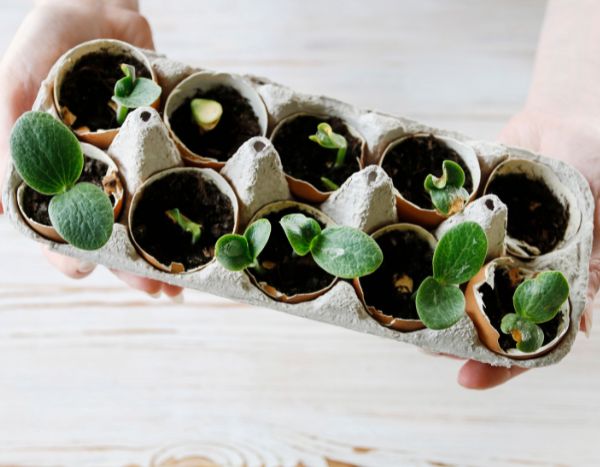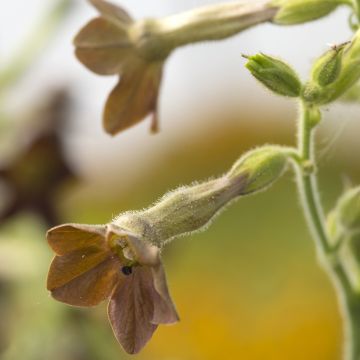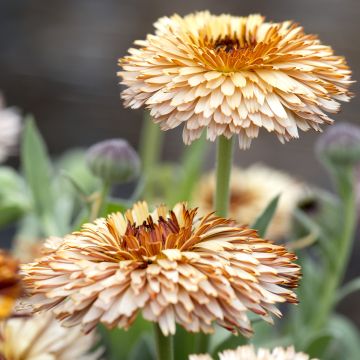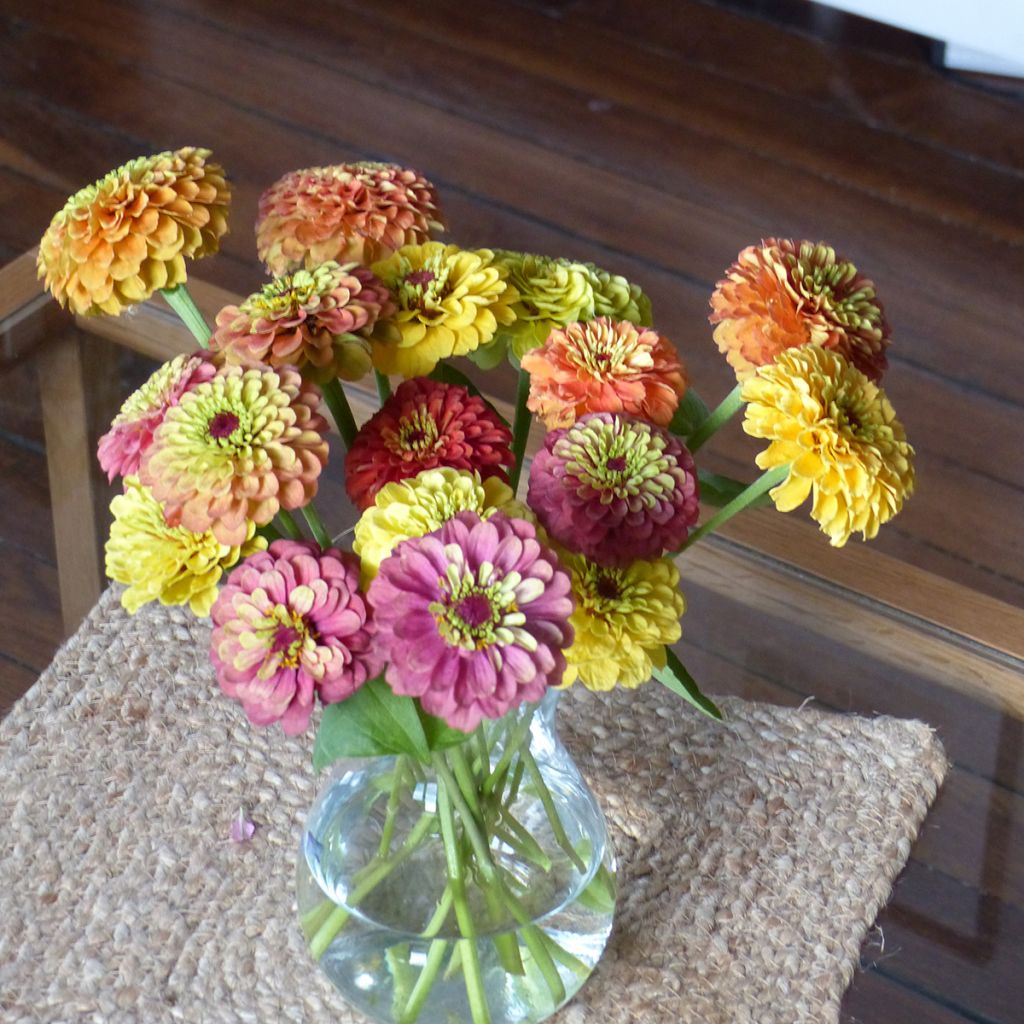

Zinnia x elegans Queen Lime Bicolors Mix - Zinnia à fleurs de dahlia Queen Lime Bicolors Mix, Zinnia élégant, Zinnia commun, Zinnia des jardins
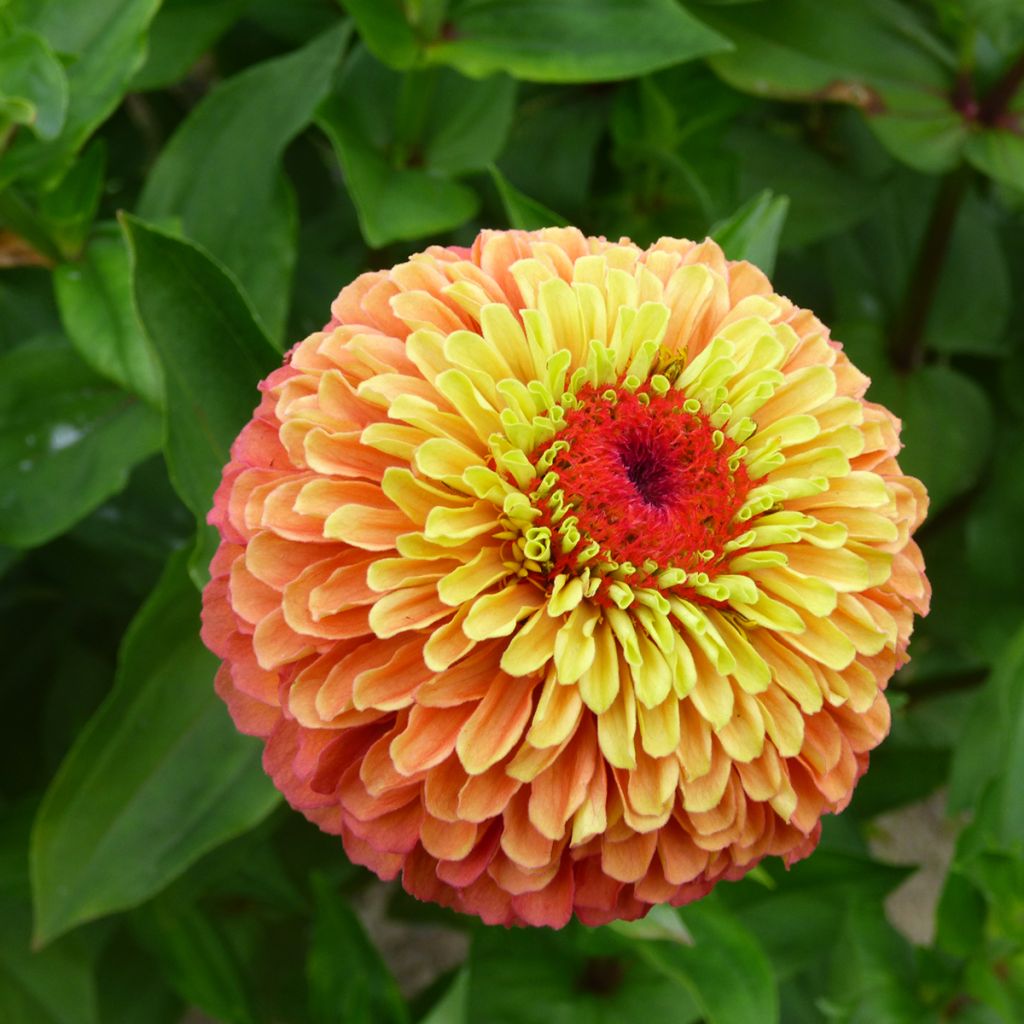

Zinnia x elegans Queen Lime Bicolors Mix - Zinnia à fleurs de dahlia Queen Lime Bicolors Mix, Zinnia élégant, Zinnia commun, Zinnia des jardins
Zinnia x elegans Queen Lime Bicolors Mix - Zinnia à fleurs de dahlia Queen Lime Bicolors Mix, Zinnia élégant, Zinnia commun, Zinnia des jardins
Zinnia x elegans Queen Lime Bicolors Mix
Zinnia à fleurs de dahlia Queen Lime Bicolors Mix, Zinnia élégant, Zinnia commun, Zinnia des jardins
Special offer!
Receive a €20 voucher for any order over €90 (excluding delivery costs, credit notes, and plastic-free options)!
1- Add your favorite plants to your cart.
2- Once you have reached €90, confirm your order (you can even choose the delivery date!).
3- As soon as your order is shipped, you will receive an email containing your voucher code, valid for 3 months (90 days).
Your voucher is unique and can only be used once, for any order with a minimum value of €20, excluding delivery costs.
Can be combined with other current offers, non-divisible and non-refundable.
Home or relay delivery (depending on size and destination)
Schedule delivery date,
and select date in basket
This plant carries a 6 months recovery warranty
More information
We guarantee the quality of our plants for a full growing cycle, and will replace at our expense any plant that fails to recover under normal climatic and planting conditions.
Would this plant suit my garden?
Set up your Plantfit profile →
Description
The Zinnia elegans 'Queen Lime Bicolors Mix' is a blend of elegant Zinnia varieties from the same range, featuring the unique characteristic of producing bicoloured flowers with a more or less pronounced lime green touch, a very original and attractive 'lime' colouration. Sowing under warmth from March produces young plants that begin flowering from June-July. Their varied colours are beautifully highlighted by the foliage of a rich, intense medium green, creating a very aesthetic overall harmony. Perfect for flowering a bed, this mix will also provide you with beautiful stems ideal for creating colourful cut flowers for indoors.
Zinnia elegans, the species from which this horticultural mix is derived, is native to Mexico, an origin that explains its tolerance of heat and sensitivity to frost. This species belongs to the vast Asteraceae family which includes over 23,000 known species encompassing both wild plants (Thistles, Cornflowers) and aromatic species (Mugworts) or prized ornamentals like Chrysanthemums or Dahlias. In the Asteraceae, what is taken for a 'flower' is in reality a complex inflorescence consisting of a centre of tiny fertile flowers and a crown of peripheral, often sterile flowers which mimic petals. This morphological particularity typical of this family once called 'Compositae' for this reason, contributes to the beauty and density of Zinnia flowers.
The seeds of 'Queen Lime Bicolors Mix' germinate to produce young plants that quickly develop a dense, ramified clump which can reach up to 80-90 cm in height and about 30-35 cm in width. The bright, fairly luminous, pure green leaves are opposite (facing each other relative to the stem axis) and arranged in a decussate manner (crossed at 90° from one level to the next), giving a balanced appearance to the whole. Ovate in shape, they end in a point and are borne directly on the stem without a petiole (they are said to be sessile). The lamina is slightly downy, which adds a velvety aspect to the plant. The hollow and moderately brittle stems support the large flowers without difficulty even in wind or moderate rain, making Zinnia particularly suited to open, sunny areas. This mix contains semi-double to double bicoloured varieties whose centre (the tubular flowers) is purple to dark red, while the peripheral florets (ligulate flowers) gradually shift from lime to yellow, pinkish or apricot. These heads of about 7 cm in diameter stand out well visually against the green vegetation while playing more on overall harmony than contrast due to the presence of the lime green colour. By regularly removing faded flowers, you will encourage flowering which will extend until the first frosts, thus adding colour to your beds.
The Zinnia 'Queen Lime Bicolors Mix' is ideal for structuring a bed, dressing borders, or filling containers on a sunny patio. To create harmonious and colourful displays, it can be paired with annuals with similar requirements. Among the best companions is Cosmos bipinnatus, whose finely cut foliage and varied flower colours enhance the visual diversity of the bed. You can also combine them with full-sun, drought-resistant perennials, playing on complementary foliage or flowering. Nepeta faassenii (Catmint), with its lavender-blue flowers and aromatic foliage, harmonises perfectly with the warmer palette of Zinnias, and, like it, attracts pollinators, thus promoting biodiversity in the garden. In the same vein, Lavender 'Hidcote' will also be a perfect companion. Another charming Asteraceae, Echinacea purpurea 'Leuchtstern' lives up to its German name 'bright star' with its very large lilac-pink flowers with a brown-orange centre that will harmonise well with the range of hues in your Zinnia mix.
Zinnia x elegans Queen Lime Bicolors Mix - Zinnia à fleurs de dahlia Queen Lime Bicolors Mix, Zinnia élégant, Zinnia commun, Zinnia des jardins in pictures
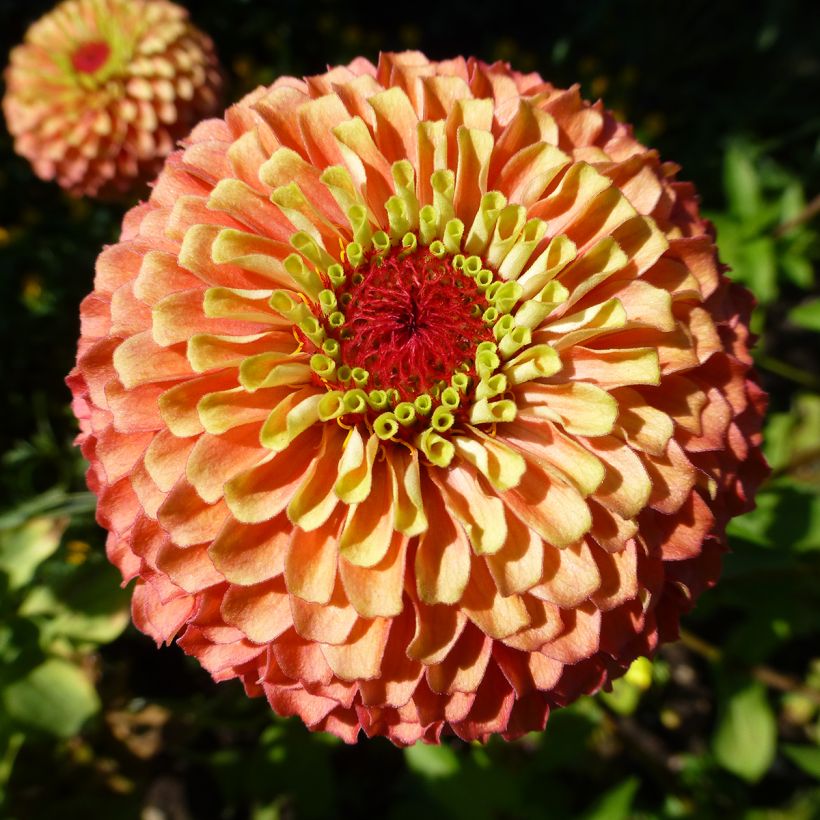

Flowering
Foliage
Plant habit
Botanical data
Zinnia
x elegans
Queen Lime Bicolors Mix
Asteraceae
Zinnia à fleurs de dahlia Queen Lime Bicolors Mix, Zinnia élégant, Zinnia commun, Zinnia des jardins
Cultivar or hybrid
Planting and care
Sow your Zinnia elegans 'Queen Lime Bicolors Mix' seeds directly outdoors in May, once the soil has warmed. Choose a location in full sun with soil that has been previously kept moist, well-drained, well-worked, weeded and loosened. Sow the seeds at a depth of 3 mm in holes spaced 30 cm apart. Water regularly, especially during dry periods. Germination usually takes 7 to 14 days. When the zinnia young plants are large enough to handle, thin them out to space the plants 30 cm apart.
For early flowering, you can also sow indoors in a seed tray with standard sowing compost from March to April at a temperature of 18-20°C. After sowing, keep the surface of the compost moist but not waterlogged, and expose your tray to light which promotes germination. When the young plants are large enough to handle, transplant them and grow them in cooler conditions.
When the plants are well developed and all risk of frosts has passed, acclimatise them gradually to outdoor conditions for 10-15 days before planting outdoors in their final position. Zinnias elegans are easy plants to grow in the sun, in well-drained to dry, fairly rich, even clayey soil. They are susceptible to powdery mildew in humid climates, especially if they do not have good ventilation around them. This inconvenience can be easily avoided by not planting them in confined locations and taking care not to wet their foliage. Be cautious during planting of slugs' appetite as they are fond of their tender young leaves. They thrive in climates with long, hot, dry summers and are not at all hardy.
Sowing period
Intended location
Planting & care advice
This item has not been reviewed yet - be the first to leave a review about it.
Similar products
Haven't found what you were looking for?
Hardiness is the lowest winter temperature a plant can endure without suffering serious damage or even dying. However, hardiness is affected by location (a sheltered area, such as a patio), protection (winter cover) and soil type (hardiness is improved by well-drained soil).

Photo Sharing Terms & Conditions
In order to encourage gardeners to interact and share their experiences, Promesse de fleurs offers various media enabling content to be uploaded onto its Site - in particular via the ‘Photo sharing’ module.
The User agrees to refrain from:
- Posting any content that is illegal, prejudicial, insulting, racist, inciteful to hatred, revisionist, contrary to public decency, that infringes on privacy or on the privacy rights of third parties, in particular the publicity rights of persons and goods, intellectual property rights, or the right to privacy.
- Submitting content on behalf of a third party;
- Impersonate the identity of a third party and/or publish any personal information about a third party;
In general, the User undertakes to refrain from any unethical behaviour.
All Content (in particular text, comments, files, images, photos, videos, creative works, etc.), which may be subject to property or intellectual property rights, image or other private rights, shall remain the property of the User, subject to the limited rights granted by the terms of the licence granted by Promesse de fleurs as stated below. Users are at liberty to publish or not to publish such Content on the Site, notably via the ‘Photo Sharing’ facility, and accept that this Content shall be made public and freely accessible, notably on the Internet.
Users further acknowledge, undertake to have ,and guarantee that they hold all necessary rights and permissions to publish such material on the Site, in particular with regard to the legislation in force pertaining to any privacy, property, intellectual property, image, or contractual rights, or rights of any other nature. By publishing such Content on the Site, Users acknowledge accepting full liability as publishers of the Content within the meaning of the law, and grant Promesse de fleurs, free of charge, an inclusive, worldwide licence for the said Content for the entire duration of its publication, including all reproduction, representation, up/downloading, displaying, performing, transmission, and storage rights.
Users also grant permission for their name to be linked to the Content and accept that this link may not always be made available.
By engaging in posting material, Users consent to their Content becoming automatically accessible on the Internet, in particular on other sites and/or blogs and/or web pages of the Promesse de fleurs site, including in particular social pages and the Promesse de fleurs catalogue.
Users may secure the removal of entrusted content free of charge by issuing a simple request via our contact form.
The flowering period indicated on our website applies to countries and regions located in USDA zone 8 (France, the United Kingdom, Ireland, the Netherlands, etc.)
It will vary according to where you live:
- In zones 9 to 10 (Italy, Spain, Greece, etc.), flowering will occur about 2 to 4 weeks earlier.
- In zones 6 to 7 (Germany, Poland, Slovenia, and lower mountainous regions), flowering will be delayed by 2 to 3 weeks.
- In zone 5 (Central Europe, Scandinavia), blooming will be delayed by 3 to 5 weeks.
In temperate climates, pruning of spring-flowering shrubs (forsythia, spireas, etc.) should be done just after flowering.
Pruning of summer-flowering shrubs (Indian Lilac, Perovskia, etc.) can be done in winter or spring.
In cold regions as well as with frost-sensitive plants, avoid pruning too early when severe frosts may still occur.
The planting period indicated on our website applies to countries and regions located in USDA zone 8 (France, United Kingdom, Ireland, Netherlands).
It will vary according to where you live:
- In Mediterranean zones (Marseille, Madrid, Milan, etc.), autumn and winter are the best planting periods.
- In continental zones (Strasbourg, Munich, Vienna, etc.), delay planting by 2 to 3 weeks in spring and bring it forward by 2 to 4 weeks in autumn.
- In mountainous regions (the Alps, Pyrenees, Carpathians, etc.), it is best to plant in late spring (May-June) or late summer (August-September).
The harvesting period indicated on our website applies to countries and regions in USDA zone 8 (France, England, Ireland, the Netherlands).
In colder areas (Scandinavia, Poland, Austria...) fruit and vegetable harvests are likely to be delayed by 3-4 weeks.
In warmer areas (Italy, Spain, Greece, etc.), harvesting will probably take place earlier, depending on weather conditions.
The sowing periods indicated on our website apply to countries and regions within USDA Zone 8 (France, UK, Ireland, Netherlands).
In colder areas (Scandinavia, Poland, Austria...), delay any outdoor sowing by 3-4 weeks, or sow under glass.
In warmer climes (Italy, Spain, Greece, etc.), bring outdoor sowing forward by a few weeks.









































